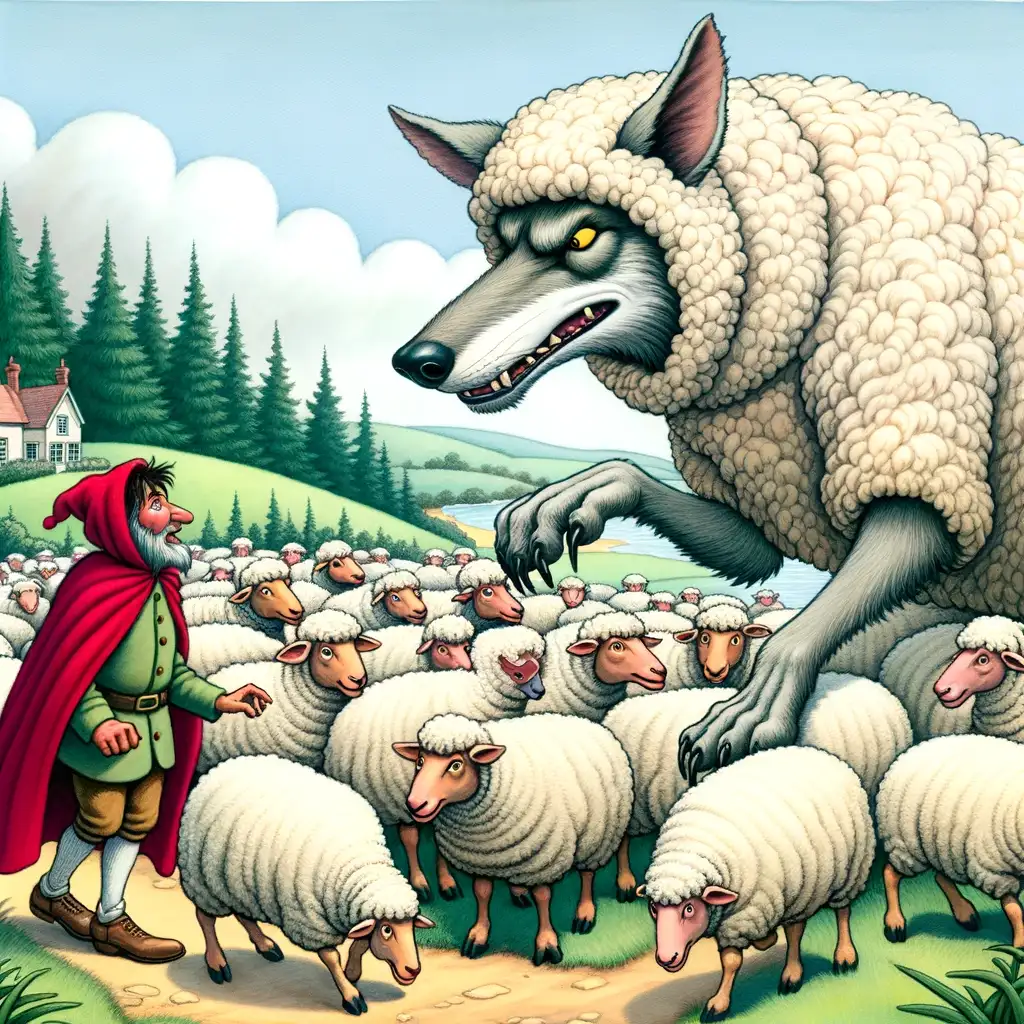
The Wolf in Sheep’s Clothing – Aesop’s Fables
Aesop’s Fables have survived centuries, transcending cultural and temporal boundaries, and leaving indelible imprints on the minds of young and old alike. One such story that has lingered in our collective memory is “The Wolf in Sheep’s Clothing”. The beauty of the tale rests in its simplicity, and the profundity of its message makes it relevant even in contemporary society. The story serves as a cautionary reminder that appearances can be deceptive, and things are not always what they seem.
The Sheepskin Charade: Unraveling Aesop’s Cunning Wolf
The narrative revolves around a shrewd wolf who, in a cunning attempt to fool a flock of sheep, dons a sheep’s skin and passes off as one of them. This innovative disguise not only grants him easy access into the herd but also assures him of a constant, effortless supply of food. The wolf, who otherwise would have had to hunt down his prey, now simply had to wear a disguise and wait. This ingenious strategy was his ticket to an easy life, or so he thought.
However, the wolf’s triumph was short-lived. His true identity was soon exposed when the shepherd, deciding to select a sheep for his dinner, incidentally chose the wolf. The latter’s covert operation thus met a tragic end, and he paid dearly for his deceit. The story is a clever study in contrasts, juxtaposing the wolf’s initial success with his eventual downfall. The wolf’s fate is Aesop’s crafty way of showing that dishonesty, no matter how successfully concealed initially, will eventually be revealed.
Sifting Truth from Deceit: A Deep-Dive into the Wolf’s Masquerade
Delving deeper into the narrative, the wolf’s masquerade is a metaphor for dishonesty and deceit, traits that are universally scorned. The wolf in the story embodies these vices, choosing to manipulate and deceive rather than to work and strive. The wolf’s disguise serves a dual purpose – it conceals his true identity and also enables him to prey on the unsuspecting sheep. This is a powerful illustration of how deception can be used to exploit the innocent.
However, the story also highlights the inevitable consequences of deceit. The wolf’s downfall is swift and gruesome, serving as a ghastly reminder of the potential repercussions of dishonesty. The fall of the wolf is not just a triumph of truth over deceit, but also an affirmation of the old adage ‘as you sow, so shall you reap’. The story hence serves as a timeless reminder of the importance of honesty and the perils of deceit.
Thus, through the simple yet powerful story of “The Wolf in Sheep’s Clothing”, Aesop offers an enduring lesson on the dangers of deceit and the value of honesty. The tale, with its vivid imagery and memorable characters, serves to caution us against the perils of deception, reminding us that appearances can be misleading and that truth, though sometimes camouflaged, eventually prevails. In its unpretentious manner, the fable holds up a mirror to society, urging us to look beyond the surface and discern the reality that lies beneath. As we navigate through life, the story serves as a timeless beacon, guiding us to choose the path of truth and honesty, reminding us that the facade of deceit may seem appealing, but it is always the wolf in sheep’s clothing.


